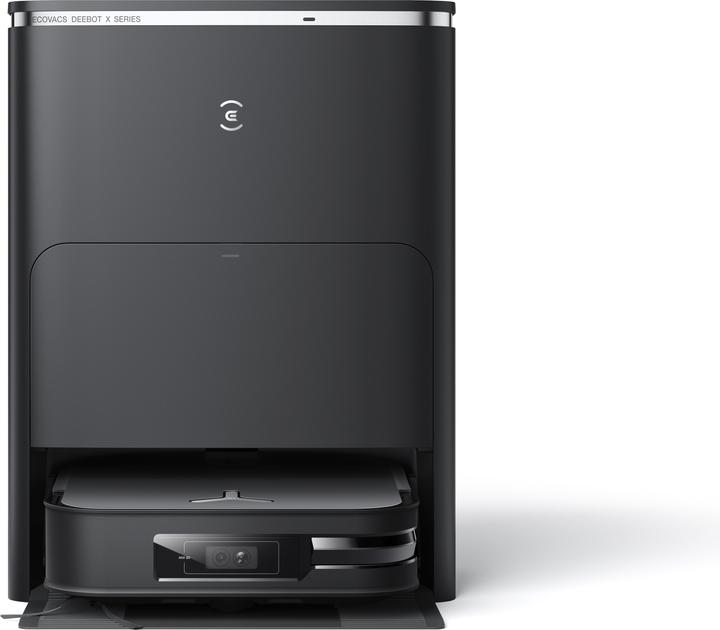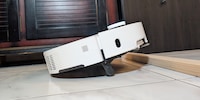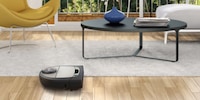

Roborock, iRobot, Ecovacs, Dreame – who makes the best robot vacuum?
Scanning, vacuuming, mopping – my big test featuring four flagships reveals which robot vacuum cleaner does it best.
Today, I’m comparing the four biggest top models from our sizeable robot vacuum cleaner range. All four are priced betweenaround 1,100 to 1,200 francs. I’m testing the Roborock S8 Pro Ultra, the iRobot Roomba Combo j9+, the Ecovacs Deebot X2 Omni and the Dreame L20 Ultra Complete.
For this four-way competition, every vacuum cleaner has to complete the same tasks in my flat, where it can earn a maximum of five points per task. At the end, you’ll find an overall ranking and a weighted result.
Equipment: mopping is mandatory in this league
All of them have basically the same equipment. A suction station that also cleans and dries the mop is a must in this price range. Only the iRobot doesn’t offer this and gets a point off as a result. The Dreame, on the other hand, gets full marks for additional features that none of the others have.
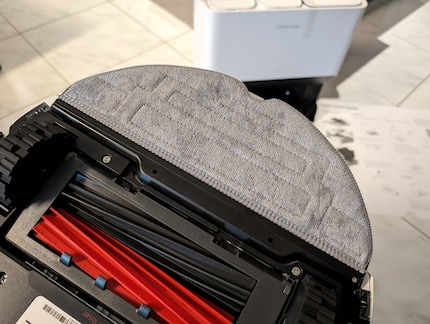
Source: Lorenz Keller
Roborock S8 Pro Ultra: docking station empties dirt into a dust bag and washes and dries the mop. Robot with camera, LiDAR (Light Detection and Ranging) and water tank. Brush and mop can be raised five millimetres. Voice control. 3D maps and obstacle detection. 🤖🤖🤖🤖
iRobot Roomba Combo j9+: docking station empties dirt into bag and refills water. Robot with camera and water tank. Mop is lifted and placed on the robot by two arms. Detects and photographs obstacles. 🤖🤖🤖
Ecovacs Deebot X2 Omni: docking station empties dirt into bag. Mops are cleaned with hot water and dried. Navigation with LiDAR and camera. Mops can be raised up to 15 millimetres. Designated voice assistant Yiko. Camera can also be used for video calls or to monitor your home. 🤖🤖🤖🤖
Dreame L20 Ultra Complete: docking station empties dirt into bag. Mops are cleaned with hot water and dried. Detergent can be added automatically. Navigation with LiDAR and camera, detects and photographs obstacles. One of the mops can be extended to clean edges. The two mops can also be removed in the station. 🤖🤖🤖🤖🤖
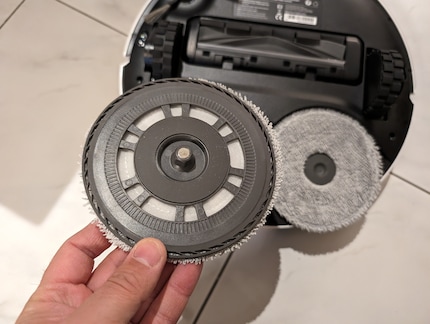
Source: Lorenz Keller
Setup: updates and mandatory login are annoying
Two things annoy me about all four robots – they all require an update before you can start cleaning properly. And login is always required to set up the app. Really, it’s totally unnecessary for the operation of a robot vacuum.
Roborock S8 Pro Ultra: the Roborock’s ready for use in just 14 minutes – that’s a record. Also because the update is only downloaded in the background after your first cleaning run. On the negative side, the station’s glued-on floor protector falls off when I want to move the dock against the wall. And the QR code for the app download doesn’t work with an Android phone. On iPhone, I have to search for the app myself in the store. 🤖🤖🤖🤖
iRobot i9 Combo: installation takes 19 minutes. The base station is a positive surprise with its great design and practical storage option for spare dust bags. Not so good – adhesive residue on the robot can only be removed with alcohol, and my first attempt to connect with the robot doesn’t work. Error message. On attempt two I have to wait a long time, then it finally works. It’s also annoying that the mandatory update causes the app to crash. Fortunately, everything works after a restart. 🤖🤖🤖
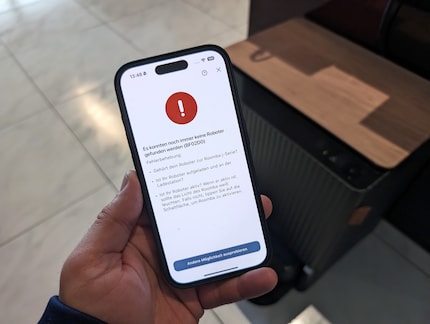
Source: Lorenz Keller
Ecovacs Deebot X2 Omni: the entire setup takes 20 minutes. This is mainly due to the fact that two updates have to be installed one after the other. Yiko voice assistant is installed straight away. Only thing of note: the station must be actively switched on in order to charge. I realise this because the robot tells me, before driving itself to the station to charge. 🤖🤖🤖🤖
Dreame L20 Ultra Complete: the Dreame is ready for use in 16 minutes, no roadblocks. Attach the mops magnetically, slide them onto the station, establish a connection via the app, download an update. Done. An exemplary quick and easy installation. 🤖🤖🤖🤖🤖
Creating a flat map: the most important step
To ensure the robot hoover finds its way around easily, ensure you take enough time for mapping. The process involves the robot travelling through the rooms – without cleaning – and creating a map. Ideally, your apartment will be tidy and all temporary obstacles removed.
In the test, this worked very well for all four models. However, the iRobot took much longer than the three competitors. This is because it primarily uses a camera for orientation, the others also use LiDAR. They measure their surroundings with laser beams, enabling faster and more precise navigation.
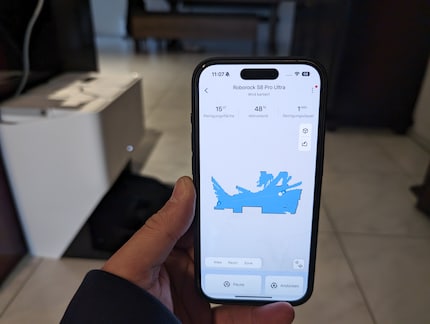
Source: Lorenz Keller
I’m happy that all four robots produce a good map at the first attempt. But it’s not just speed that counts for points, but how easily I can edit the map afterwards too. I divide the maps into three rooms – living room, kitchen and hallway. This allows me to then clean specific areas.
Roborock S8 Pro Ultra: it scans very fast, but the balcony is also partially captured by accident. The robot looks beyond the frame of the glass door, it seems. I can’t delete the balcony part either. Still, I can at least define it as a restricted zone. Fortunately, editing the rooms is very simple. I can also view a 3D representation right away. 🤖🤖🤖🤖
iRobot i9 Combo: mapping is also possible during the first two cleans, but I choose mapping-only mode. Unfortunately, it’s tucked away quite well, and it takes much longer than the competition. In addition, the iRobot bumps into furniture when scanning and pushes obstacles aside. Still, the resulting map is very precise, the room layout almost correct. I’m guided through the process step by step, it even shows me obstacles detected in photos. I can then decide what the robot should do there. The iRobot recognises a cat toy, but not the much larger one a metre away. 🤖🤖🤖
Ecovac’s Deebot X2 Omni: the robot explores my home quickly and purposefully. The kitchen and living room are automatically entered correctly on the map. The Deebot also wants to draw in furniture – sometimes well, sometimes completely wrong. Amazingly, it even recognises the cat feeder. Post-editing is quite simple, although the 2D map image is much better than the 3D one. 🤖🤖🤖🤖🤖
Dreame L20 Ultra Complete: the L20 drops its mops for mapping – then scans my home in a record time of four minutes. Here, too, the balcony problem pops up, and it can’t be deleted in the app. The L20 recognises spots that could cause problems, such as cables. And indeed, after scanning, the robot shows me the two areas where power cables are lying around. Unless I decide otherwise, it’ll avoid them from now on. 🤖🤖🤖🤖
In the graphic above, you can also see how long it takes the four robots to clean a net floor area of around 42 square metres. The differences aren’t huge, with around 13 minutes between the fastest and slowest model.
Dreame/Roborock:
🤖🤖🤖🤖🤖
iRobot:
🤖🤖🤖🤖
Ecovacs:
🤖🤖🤖
Cleaning: they all struggle with edges and corners
Now we come to the central question, namely how well the robots vacuum and mop. All four test models have to perform the same three tasks across three cleans – vacuuming five grammes of dust and cat hair, vacuuming 30 grammes of sand and cat litter and cleaning up soy sauce smeared on the floor (one tablespoonful). I use a precision scale to measure how much dirt has actually been picked up, as well as the eye test. In the graphic, you can see what percentage of the dirt was actually captured in default mode.
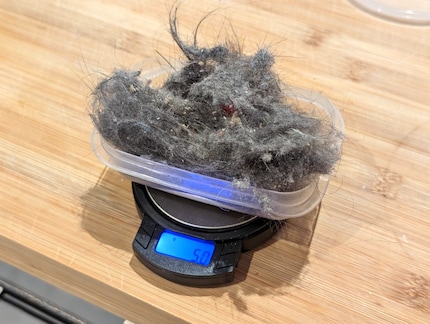
Source: Lorenz Keller
Vacuuming five grammes of dust
Roborock S8 Pro Ultra: one corner wasn’t vacuumed, even the edges aren’t completely clean. Still, 4.3 out of 5 grammes is the second-best result.
🤖🤖🤖🤖
iRobot Roomba Combo j9+: it first drives around the entire dirt area, treating it as an obstacle. I force it to attack the mess by declaring it a cleaning zone. What I also notice: the app freezes as long as a task isn’t completely finished. In attempt two, the vacuum cleaner covers everything very quickly and can’t be stopped. However, the corner and one edge are forgotten. The result isn’t good with only 3.6 out of 5 grammes.
🤖🤖
Ecovacs Deebot X2 Omni: the robot recognises the heavy dust contamination and cleans this area extra intensively, but unfortunately not everywhere. Only 4 out of 5 grammes of dust end up in the container.
🤖🤖🤖
Dreame L20 Ultra Complete: the L20 ejects its mops for vacuuming. However, it then reacts too sensitively to large clumps of dust and hair, sometimes mistakenly recognising animal droppings, sometimes an obstacle that shouldn’t actually be one. I press ignore, and everything is cleaned in the next attempt. Deeply at that, only the corner isn’t quite clean. 4.7 out of 5 grammes is the best result.
🤖🤖🤖🤖
Vacuuming 30 grammes of cat litter
Roborock S8 Pro Ultra: corners and edges are also a problem here in normal suction mode. Still, 26.2 out of 30 grammes is the second-best result.
🤖🤖🤖🤖
iRobot Roomba Combo j9+: thanks to the pre-programmed cleaning zone, the Roomba covers everything in a targeted manner. But edges and corners of the kitchen are also a problem here. The resulting 24.3 out of 30 grammes are okay.
🤖🤖🤖
Ecovacs Deebot X2 Omni: as with all others, edges are generally a problem. However, the Deebot also leaves a lot of litter behind, especially around the edges. 24.6 out of 30 grammes is fine.
🤖🤖🤖
Dreame L20 Ultra Complete: the L20 Ultra also achieves the best cleaning value in this category – 27.8 out of 30 grammes. But the floor still isn’t really clean, scattered residue is clearly visible.
🤖🤖🤖🤖
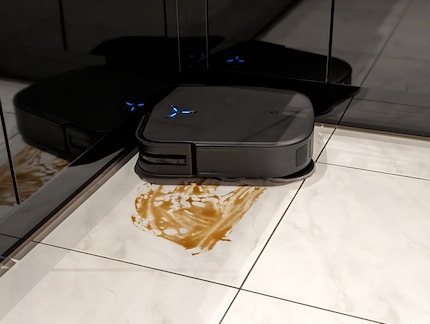
Source: Lorenz Keller
Smeared soy sauce
Roborock S8 Pro Ultra: all robots start in standard mode, i.e. they vacuum and mop at the same time. The Roborock recognises the soy sauce. it drives over it much more slowly, it smudges a bit, it cleans again, but not everything. The floor remains slightly sticky.
🤖🤖🤖
iRobot Roomba Combo j9+: the soy sauce is recognised and the Roomba intensively cleans the same spot. It takes a very long time. The soy sauce isn’t completely gone afterwards, and everything is a bit sticky all around. As the base station doesn’t have a cleaning mode, I have to clean the mop myself in the washing machine.
🤖🤖
Ecovacs Deebot X2 Omni: first the Deebot smears the soy sauce. But then it recognises the smudge and cleans over it twice more when it’s nearby. The floor remains a little sticky.
🤖🤖🤖
Dreame L20 Ultra Complete: here too, the gadget recognises the extra smear and targets it. The sticky soy sauce is gone afterwards, but as with all the others, the floor remains a little tacky. Technically, the Dreame is the only robot vacuum that could clean the corner with its extendable mop, but it does just as little as the competition.
🤖🤖🤖
Noise: vacuuming makes quite a racket
While the four robots clean at a quite pleasant volume, the base stations make a lot of noise. I measured from a distance of one metre in each case.
Roborock/iRobot/Ecovacs: all three are in a similar range. The iRobot is a little louder when vacuuming, but quiet when in the station. The other two are similarly quiet when vacuuming – and just as loud when at their base.
🤖🤖🤖
Dreame: the L20 achieves the best values in both categories. However, a difference can primarily be heard at the base station – even then, it’s not huge.
🤖🤖🤖🤖
Battery and range: three good, one only sufficient
How big an area can the robots cover with one battery charge? With the Roborock it’s around 200 square metres, the Ecovacs and Dreame manage around 210. A minimal difference, then, only the iRobot falls short. One battery charge is just enough for it to cover around 105 square metres. The good news is that this should still be enough for most homes.
But why the big difference? Maybe the iRobot cleans less effectively? One indication of this is that all robots had to clean the same area. The Roomba indicates in the app that it cleaned around 60 square metres. The other three state between 40 and 45 square metres – and each of them across several test runs.
I measured and came up with an effective floor area of around 42 square metres. This confirms my observations: the Roomba sometimes covers the same areas several times – without needing too. The models with LiDAR navigate much more precisely. However, experience also shows that the iRobot gets better over time, but this can’t be shown here in a direct comparison.
Roborock/Ecovacs/Dreame: 🤖🤖🤖🤖🤖
iRobot: 🤖🤖🤖
Verdict: a clear winner – even in the weighted evaluation
If I add up all the robot emojis, the Dreame L20 Ultra Complete narrowly wins the big comparison with 39 points. In second place, the Roborock S8 Pro Ultra with 36 points. Third place goes to the Ecovacs Deebot X2 Omni with 33 points, and fourth place goes to the iRobot i9 Combo with 26.
What changes if I weight the different categories? I decided on the following split.
The three cleaning categories: 200 per cent
Equipment/mapping/cleaning time/battery: 100 per cent
Setup/noise: 50 per cent
This doesn’t change the ranking. But Dreame and Roborock move a little closer together, while Ecovacs and iRobot distance themselves a bit.
Overall, however, the ranking could look completely different depending on your own needs. Winner Dreame, for example, has a huge docking station. iRobot’s is only half as tall and much more elegant with its wooden cover. The iRobot would also win in terms of robot height with 8.7 centimetres – compared to the Dreame with 10.4 centimetres. If this plays a decisive role for you, your winner may be a different model.
The test also showed that the robots are ideal for daily use, keeping the amount of ambient dust low. In the case of heavy soiling or larger patches such as litter, they’re no match for a normal vacuum cleaner. The mops also fail when heavily soiled, and you’ll have to pick up a rag yourself.
What’s important to you in a robot vacuum cleaner? What experience do you have? Let the community and I know in the comments!
Header image: Lorenz Keller
Gadgets are my passion - whether you need them for the home office, for the household, for sport and pleasure or for the smart home. Or, of course, for the big hobby next to the family, namely fishing.
Practical solutions for everyday problems with technology, household hacks and much more.
Show all
